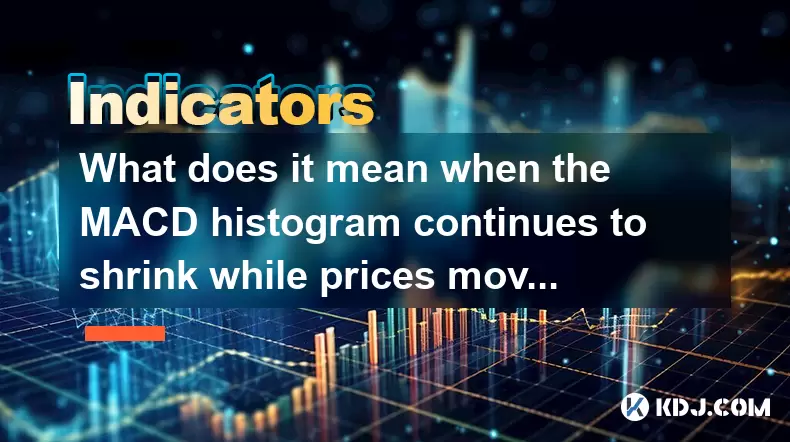-
 Bitcoin
Bitcoin $114800
-0.87% -
 Ethereum
Ethereum $4776
1.26% -
 XRP
XRP $3.035
-0.59% -
 Tether USDt
Tether USDt $0.9997
0.01% -
 BNB
BNB $868.3
-2.21% -
 Solana
Solana $207.8
2.24% -
 USDC
USDC $0.9999
0.00% -
 Dogecoin
Dogecoin $0.2321
-2.70% -
 TRON
TRON $0.3658
1.42% -
 Cardano
Cardano $0.9042
-1.85% -
 Chainlink
Chainlink $25.67
-0.24% -
 Hyperliquid
Hyperliquid $43.96
1.17% -
 Sui
Sui $3.679
-2.11% -
 Stellar
Stellar $0.4091
-1.83% -
 Ethena USDe
Ethena USDe $1.000
-0.01% -
 Bitcoin Cash
Bitcoin Cash $593.4
0.58% -
 Avalanche
Avalanche $25.53
0.89% -
 Hedera
Hedera $0.2476
-1.21% -
 Litecoin
Litecoin $119.7
-1.84% -
 UNUS SED LEO
UNUS SED LEO $9.609
0.34% -
 Toncoin
Toncoin $3.352
-0.91% -
 Shiba Inu
Shiba Inu $0.00001292
-2.45% -
 Uniswap
Uniswap $11.08
-1.13% -
 Polkadot
Polkadot $4.100
-1.09% -
 Cronos
Cronos $0.1609
4.53% -
 Dai
Dai $0.9999
0.00% -
 Bitget Token
Bitget Token $4.706
-0.88% -
 Aave
Aave $350.1
2.03% -
 Monero
Monero $268.0
0.06% -
 Ethena
Ethena $0.7069
-4.77%
What does it mean when the MACD histogram continues to shrink while prices move sideways?
A shrinking MACD histogram during sideways price action signals weakening momentum, often foreshadowing a breakout in crypto markets.
Aug 13, 2025 at 11:35 am

Understanding the MACD Histogram and Its Components
The MACD (Moving Average Convergence Divergence) indicator is a momentum-based tool widely used in cryptocurrency trading. It consists of three elements: the MACD line, the signal line, and the MACD histogram. The histogram visually represents the difference between the MACD line and the signal line. When the histogram bars are above the zero line and growing taller, it indicates increasing bullish momentum. Conversely, when the bars are below zero and extending downward, bearish momentum is strengthening.
The shrinking of the histogram means the gap between the MACD line and the signal line is narrowing. This can occur during both upward and downward price movements, but when prices are moving sideways, the interpretation becomes more nuanced. A shrinking histogram in this context suggests that momentum is weakening, even if the price remains within a range. Traders often interpret this as a sign of decreasing conviction among market participants.
Price Action in a Sideways Market
When prices move sideways, they are typically confined within a range-bound or consolidation phase. This means there is no clear directional trend, and buyers and sellers are in relative equilibrium. In the cryptocurrency market, such phases often occur after strong rallies or sharp corrections. During these periods, price fluctuates between identifiable support and resistance levels without breaking out.
In such environments, the MACD histogram shrinking indicates that momentum is decelerating. Even though price isn’t dropping, the lack of upward or downward acceleration suggests that traders are becoming less aggressive. This can be a precursor to a breakout or a continuation of the range, depending on volume and external catalysts. The key insight is that momentum is fading, which may foreshadow a change in market structure.
Interpreting Shrinking Histogram Amidst Range-Bound Prices
A shrinking MACD histogram during sideways price movement signals diminishing momentum. This is critical because momentum often leads price. Even if the price appears stable, the reduction in the histogram’s bar height reflects that the underlying force driving price changes is weakening. In crypto markets, where sentiment can shift rapidly, this subtle clue may precede a breakout or breakdown.
For example, if Bitcoin has been trading between $60,000 and $62,000 for several days and the MACD histogram bars are getting progressively shorter, it suggests that neither bulls nor bears are gaining control. The convergence of the MACD and signal lines reduces the histogram’s amplitude. This phase may last for hours or days, especially in low-volume conditions common in certain altcoins.
How to Use This Signal in Trading Strategy
Traders can use the shrinking MACD histogram in a sideways market to prepare for potential breakouts. The following steps outline how to monitor and act on this signal:
- Open a charting platform such as TradingView or Binance’s built-in chart.
- Apply the MACD indicator by selecting it from the indicators menu.
- Observe the histogram bars and confirm that prices are moving sideways by drawing horizontal support and resistance lines.
- Monitor the height of the histogram bars over consecutive periods (e.g., 4-hour candles).
- If the bars continue to shrink while price remains range-bound, prepare for a potential breakout.
- Set up pending orders just above resistance and below support to capture movement in either direction.
- Use volume indicators alongside MACD to confirm breakout validity—rising volume on a breakout increases confidence.
This approach allows traders to remain neutral until a clear signal emerges. The shrinking histogram acts as a warning that the current equilibrium is fragile.
Distinguishing Between Compression and Reversal Signals
It is essential to differentiate between a momentum compression and an early reversal signal. A shrinking histogram during sideways movement is not inherently bearish or bullish. It reflects compression of momentum, which can resolve in either direction. In crypto markets, false breakouts are common, so confirmation is crucial.
To avoid premature entries:
- Wait for the price to close outside the established range, not just intraday spikes.
- Confirm with candlestick patterns such as engulfing bars or inside bars at the edge of the range.
- Check for alignment with higher timeframes—e.g., a 4-hour breakout confirmed on the daily chart carries more weight.
- Monitor on-chain data or news events that might trigger sudden volatility.
For instance, if Ethereum’s price is consolidating between $3,000 and $3,100 with a shrinking MACD histogram, and then a large green candle closes above $3,100 with high volume, this could validate an upside breakout. Conversely, a close below $3,000 with expanding histogram bars to the downside would suggest bearish momentum resuming.
Common Misinterpretations and How to Avoid Them
One common mistake is assuming that a shrinking histogram always precedes a reversal. In reality, it often precedes consolidation continuation or a breakout in the direction of the prior trend. Another error is ignoring the timeframe—a shrinking histogram on a 15-minute chart may be noise, while the same pattern on a daily chart could be significant.
To avoid misreading the signal:
- Always assess the broader trend using tools like moving averages or trendlines.
- Compare the current histogram behavior with past consolidations in the same asset.
- Avoid trading based on MACD alone; combine it with RSI, volume, or order book depth for confirmation.
- Recognize that in low-liquidity altcoins, MACD signals may be less reliable due to erratic price movements.
For example, if Solana has been in an uptrend and enters a sideways phase with a shrinking histogram, the most probable outcome may be an upside breakout, not a reversal, especially if fundamentals remain strong.
Frequently Asked Questions
Q: Can a shrinking MACD histogram occur during a strong trend?
Yes. A shrinking histogram can appear during a trend as part of a momentum pause or consolidation within the trend. It does not necessarily indicate a reversal. For instance, after a sharp rally in Cardano, the histogram may shrink as price enters a brief pullback or sideways phase, only to resume upward with renewed momentum.
Q: Should I exit my position if the MACD histogram starts shrinking in a sideways market?
Not automatically. A shrinking histogram alone is not a sell signal. If you're in a profitable trade, consider tightening your stop-loss or taking partial profits, but exiting entirely depends on your strategy and risk tolerance. Monitor for breakout confirmation before making decisions.
Q: How does volume affect the reliability of a shrinking MACD histogram?
Low volume during histogram shrinkage reinforces the idea of lack of conviction. High volume, however, may indicate accumulation or distribution. For example, if the histogram shrinks but volume spikes near support, it could suggest buyers are stepping in, increasing the likelihood of an upside breakout.
Q: Is the MACD histogram more reliable on certain timeframes in crypto trading?
Generally, higher timeframes like 4-hour or daily charts provide more reliable MACD signals due to reduced noise. On lower timeframes (e.g., 5-minute), the histogram can fluctuate rapidly, making it harder to distinguish meaningful momentum shifts from market noise.
Disclaimer:info@kdj.com
The information provided is not trading advice. kdj.com does not assume any responsibility for any investments made based on the information provided in this article. Cryptocurrencies are highly volatile and it is highly recommended that you invest with caution after thorough research!
If you believe that the content used on this website infringes your copyright, please contact us immediately (info@kdj.com) and we will delete it promptly.
- Viral Memes, RWA Platforms, and DePIN Crushers: What's Hot in Crypto?
- 2025-08-24 14:45:20
- Meta's Hypernova Glasses: AR's Next Big Thing?
- 2025-08-24 15:05:15
- Down Under Showdown: Australia vs. South Africa in ODI Cricket
- 2025-08-24 15:10:14
- XYZVerse, Shiba Inu, and the 2025 Bull Cycle: A Meme Coin Evolution
- 2025-08-24 13:05:12
- WLFI Token, BingX, and the Trading Landscape: A New York Perspective
- 2025-08-24 12:45:20
- Aave, Governance, Allocation: Navigating DeFi's Shifting Sands
- 2025-08-24 12:45:20
Related knowledge

What does it mean when the +DI and -DI cross frequently in the DMI indicator but the ADX is flattening?
Aug 11,2025 at 03:15am
Understanding the DMI Indicator ComponentsThe Directional Movement Index (DMI) is a technical analysis tool composed of three lines: the +DI (Positive...

What does the sudden appearance of a "dark cloud cover" candlestick pattern during an uptrend indicate?
Aug 13,2025 at 11:35am
Understanding the 'Dark Cloud Cover' Candlestick PatternThe dark cloud cover is a bearish reversal pattern in technical analysis that typically appear...

What does it mean when the moving average, MACD, and RSI all send buy signals simultaneously?
Aug 11,2025 at 01:42pm
Understanding the Convergence of Technical IndicatorsWhen the moving average, MACD, and RSI all generate buy signals at the same time, traders interpr...

What does it mean when both the KDJ indicator and the RSI show overbought signals simultaneously?
Aug 13,2025 at 11:35am
Understanding the KDJ Indicator in Cryptocurrency TradingThe KDJ indicator is a momentum oscillator derived from the Stochastic Oscillator, widely use...

What does it mean when the price is trading above the SAR indicator but the red dots are densely packed?
Aug 09,2025 at 11:49pm
Understanding the SAR Indicator and Its Visual SignalsThe SAR (Parabolic Stop and Reverse) indicator is a technical analysis tool used primarily to de...

What does it mean when the candlestick chart forms a "Morning Star" but trading volume is sluggish?
Aug 12,2025 at 06:28pm
Understanding the Morning Star Candlestick PatternThe Morning Star is a three-candle bullish reversal pattern commonly observed in cryptocurrency pric...

What does it mean when the +DI and -DI cross frequently in the DMI indicator but the ADX is flattening?
Aug 11,2025 at 03:15am
Understanding the DMI Indicator ComponentsThe Directional Movement Index (DMI) is a technical analysis tool composed of three lines: the +DI (Positive...

What does the sudden appearance of a "dark cloud cover" candlestick pattern during an uptrend indicate?
Aug 13,2025 at 11:35am
Understanding the 'Dark Cloud Cover' Candlestick PatternThe dark cloud cover is a bearish reversal pattern in technical analysis that typically appear...

What does it mean when the moving average, MACD, and RSI all send buy signals simultaneously?
Aug 11,2025 at 01:42pm
Understanding the Convergence of Technical IndicatorsWhen the moving average, MACD, and RSI all generate buy signals at the same time, traders interpr...

What does it mean when both the KDJ indicator and the RSI show overbought signals simultaneously?
Aug 13,2025 at 11:35am
Understanding the KDJ Indicator in Cryptocurrency TradingThe KDJ indicator is a momentum oscillator derived from the Stochastic Oscillator, widely use...

What does it mean when the price is trading above the SAR indicator but the red dots are densely packed?
Aug 09,2025 at 11:49pm
Understanding the SAR Indicator and Its Visual SignalsThe SAR (Parabolic Stop and Reverse) indicator is a technical analysis tool used primarily to de...

What does it mean when the candlestick chart forms a "Morning Star" but trading volume is sluggish?
Aug 12,2025 at 06:28pm
Understanding the Morning Star Candlestick PatternThe Morning Star is a three-candle bullish reversal pattern commonly observed in cryptocurrency pric...
See all articles

























































































